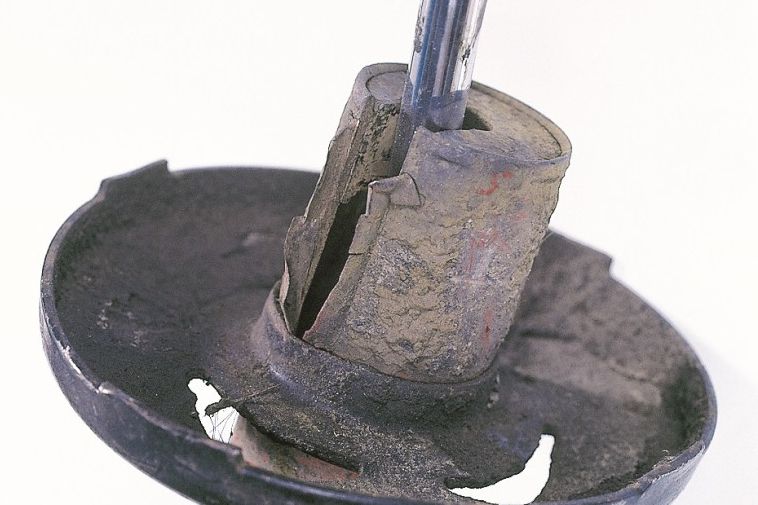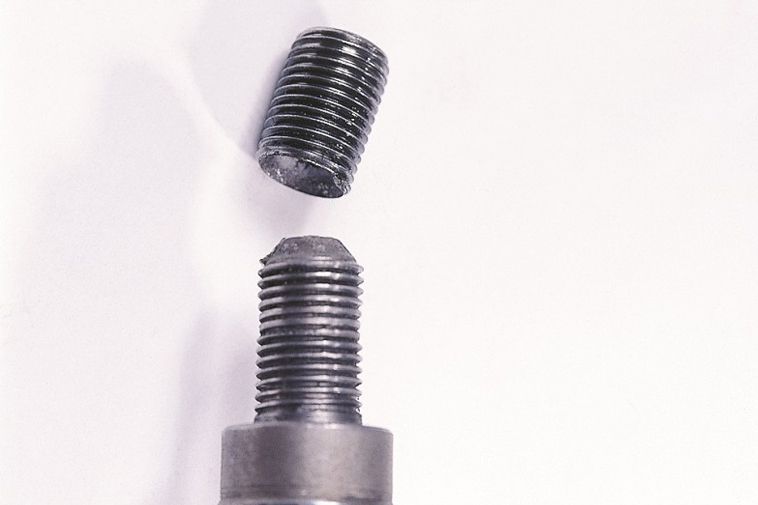Installing Shocks and Dampers Free From Distortion
We name two main reasons for shock absorber distortion: Firstly, even minor accidents may lead to the shock absorbers' mounting points being displaced so that they are no longer flush. Frequently, the piston rod is also bent in the process. Secondly, lack of care during installation is a frequent cause. When the axle is still suspended, the shock absorbers must not be tightened firmly – the reason: Once the vehicle stands on the ground again, the mounting points are not properly aligned anymore either. The serious impact on the inner workings of the shock absorber is identical in both cases.
Due to the distortions, one side of the chromium plating on the piston rod surface presses against the guide and sealing unit with each stroke – and is ultimately worn through. This results in strong wear on the seals and piston rod guide, mostly ending in a loss of oil and, thus, performance of the shock absorber.
To prevent the described distortions and defects, workshops should follow one simple rule: As a basic principle, shock absorbers may only be tightened once the vehicle stands on its wheels – or when the wheels are pressed upwards with tools such as hydraulic jacks. Also, the specified tightening torque must be observed.
Last but not least, shock absorbers installed under tension or a fastening nut tightened too firmly may lead to the pin joint tearing out. To prevent material overexpansion due to excessive tightening torques, it must be observed that, as a rule, no impact wrenches must be used when performing this work.
If these tips are observed, shock absorbers will function safely and reliably in the long term. This provides peace of mind for workshop customers too.



